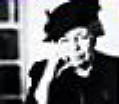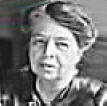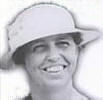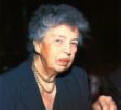 |
 |
 |
 |
 |
Please allow me to e-mail you this information, hoping you might have some more information and pictures of this visit that if possible, may be added to your fantastic website.
Mrs. Roosevelt gives a very short historical eye-witness account of Aruba in 1944.
Have you read "The Buccaneers of America" by Alexander O. Exquemelin, a translation of "De Americaensche zee-rovers"?
In the Chapter Seven describing the capture of the city of Maracaibo you can find one whole page describing Aruba or "Ruba" written by Exquemelin himself an eyewitness to their visit to Aruba in the 17th century.
An older description or eyewitness account of Aruba and the Caribbean from the 16th century can be found in “Elegias de Varones Ilustres de Indias”, written by Juan de Castellanos: Segunda Parte, pages 181, 182, 183, 184, describing Venezuela and the islands Aruba, Curacao,etc.
On page 183:
"Curazao y Aruba, que frontera
Desta costa son islas situadas,
Al Joan de Ampies, factor o tesorero,
En perpetuo gobierno fueron dadas,
Las cuales por aqueste caballero
Primeramente fueran conquistadas;
Y pues son tan cercanas desta gente,
Quiero trataros dellas brevemente.
De la costa del mar que represento,
Hasta tres leguas estaran distantes;
Las gentes que las tienen por asiento
Son mucho mas que otros elegantes,
Y tanto que por otro nombramiento
Les llamaban las islas di Gigantes
Por ser en general de su cosecha
Gente de grandes miembros y bien hecha.
No tienen para que formar querellas
De natura por malas proporciones:
Son las mujeres por estremo bellas,
Gentiles hombres todos los varones;
Por consiguiente son ellos y ellas
De nobles y apacibles condiciones;
Tienen para la guerra gentil brio,
Y su lenguaje es el de caquetio.”
More information on these books and writers can be found on the internet
I AM WORKING ON GETTING A TRANSLATION OF THE ABOVE, WILL ADD WHEN RECEIVED. DAN
Juan de Castellanos, Elegías de varones ilustres de Indias. 3d ed. (Madrid: M. Rivadeneyra, Biblioteca de Autores Españoles, 1874). (First edition 1589, rare.)
All the material I read belongs to the "Segunda Parte". The author discusses the destruction and diseases caused by the conquest on the (pearl) island of Cubagua, which we all visited. (DAN'S NOTE: MURDO, WHO DID THE TRANSLATION, AND HIS WIFE, AND LEE AND I, WENT ON VACATION TOGETHER IN AROUND 2000. ON THAT TRIP WE VISITED CUBAGUA.) He says he has been there and saw atrocities. (pp. 181,183). He also describes the area around Lake Maracaibo, its legends, houses, canoes, languages, and people (pp. 181-182).
The book appears to have been written during the second and third quarters of the 16th century. The author participated in the conquest of the coasts of what is today Venezuela and especially Colombia. Later he became a priest and was a parish priest in the Colombian city of Tunja. He was a Spaniard of course, probably from the north of the country, but surprisingly little is known about him or his origins. (Before coming to Trinidad and Venezuela he had been a minor official in Hispaniola.) My translation follows.
"Curacao and Aruba are on the frontiers of this coast. They were given in perpetuity to Joan (Juan) de Ampiés, who was a tax collector and treasurer (for the Crown). He was the first to conquer these places, and these peoples are so close to the coast that I want to discuss them briefly.
These lands are about three leagues distant from the sea coast I have been describing. The people settled on them are much more distinguished than others, so much so that as another name the other peoples there call them and their lands "The Islands of Giants", because in general as a group they are people of well-formed bodies and large limbs.
They have no reason to fight among themselves because of bad dispositions. The women are extremely beautiful and the men are well built. Consequently both males and females are of a peaceful nature, but they enjoy war (against others) when they have to. Their language is "caquetío". (The author had already mentioned this language as being one of the ones around Lake Maracaibo.) (p. 183 ends).
They are very skilled when on water and very agile on land. They are excellent marksmen when hunting for birds, rabbits or fish. They have all been washed in the fountain which takes away stains and sins. (I.e., they have all been baptized as Christians.) They have settled villages, temples, and their chiefs lead by good example.
No people in the New World are better archers than they are, because from the age of babbling little boys they are trained to be good at hitting targets. At times many of the boys gather, hoping to be the best. They take their places at the end of a plaza, with a green ball like a squash.
Then, with all of them waiting, the ball is thrown as hard as an arm can do it, and any boy who cannot hit it from a kneeling position loses a certain prize that is awarded.
They move about alertly and with such a careful tread that they never miss a rabbit or a hutia ("a gnawing edible rodent found in some of the Antilles; there are various species".) Nor do they ever fire an arrow in vain.
They were first given instructions in Christianity by Juan de Ampiés and then by Bejarano, both of them, with Christian zeal, wanted to lay a good foundation.
But these two did not always have handy a person who could administer the sacraments (i.e., an ordained priest or friar), but if such a person was lacking they provided a layman who could give instruction.
I know one such person, not an old man, and although he showed me that he was not frivolous all that solitude and lack of facilities made him live with little chastity. He was advised to give up his evil ways, but this proved how difficult it is not to be scornful and to give up bad habits.
Sometimes there was a priest there (on the islands) to take care of these matters, at least when that unfruitful position was granted to someone. But I also want to note that it was very hard work for a priest to reside among a flock that he wants to heal when he himself needs to be healed.
To find ways of consoling himself with his soul full of stains, he used to cross to Venezuela in a little canoe when he heard that the sea was calm, sometimes with great risk to his life. Because when things at sea appear favorable that is when one should have the least confidence in it.
There is a good herd of cattle there of all breeds, but of such a size that, if I don't deceive myself, they are larger than those we usually see. This harms the local Indians because the herd is so large. The Indian understands more how to work small herds when he wants to herd them into a corral.
Lázaro Bejarano succeeded to the government (of the islands), and I claim that as a successsor and as a fine person he turned out to be a great protector of the Indians. His ways earned him eternal fame, and I don't say that because I am his friend but rather because of his positive attributes and qualities. I doubt if his equal can be found.
I went to these islands; it must have been about the year 40 (i.e., 1540). There I saw him with his lady María, unhappy because of all the loniliness there. We arrived in a storm and they were happy to see us. He had come from Hispaniola with all his goods to inspect properties there.
Although he had important holdings (in Hispaniola) including a sugar mill and a considerable inheritance, it is the condition of us mortals that when we already have a good material living, we always try to make our wealth grow excessively. We don't fear risks or hard work, or long roads and sudden crises.
At the time we reached the islands' port there had been a grave misfortune there. His only son and heir had died. But he, a wise and thoughtful man, was bearing his loss with Christian fortitude. But his fine and straightforward wife was suffering badly and impatiently.
But the newly arrived people consoled her with Christian words, and then in a sturdy caravelle, weary of such a sad and lonely life, they sailed down to Cabo de Vela ("Sail Cape"), with a view to continuing on to Hispaniola, and in Río de la Hacha, where I am at present writing this, they gave them a great reception.
Rich and strange inventions, various colored fiesta clothing, and there were bullfights, jousting, and the game of cañas. They held races for rich prizes, in which all showed great skill, because each contestant was performing in front of his godess (girlfriend). But the whole fiesta was put together to show respect to doña María.
She certainly deserved such a huge and generous fiesta. For, in addition to being a capable and virtuous person, that lady was like the dawn when compared to other women, and was beautiful in every way.
With this we conclude, and here we stop this discussion of Aruba, Curacao and "Buinare". (Bonaire). (p. 184).
(Then Castellanos continues to describe the mainland coast and discusses the German conquistadores who arrived there with the permission of Carlos V.)
THIS IS A REPLY TO MRS. HENRIQUEZ FROM THE Franklin D. Roosevelt Presidential Library
This is in response to your e-mail requesting how and where you may find reports and photographs of American troops stationed in Aruba during WWII and Mrs. Roosevelt's visit there.
The records of World War II, including
military reports and photographs, repose in the National Archives. The
web-site is www.archives.gov <http://www.archives.gov>.
You will need to contact them. On the Homepage, there will be
directions on how to ask a research question. You should try to provide
as much detail as possible on the information that you seek in order to
narrow their search and achieve the best result.
Mrs. Roosevelt visited Aruba during her trip to the Caribbean Area in the later half of March 1944. We located several folders about this trip in the Eleanor Roosevelt Papers that consist of incomplete copies of itineraries, some correspondence, and other printed materials. We found no photographs of Aruba and only one of the incomplete itineraries had an entry, but no date, (the trip was kept secret as it progressed), regarding Aruba:
0830: His Excellency, the Governor of Curacao and the official military staff to be in attendance for the departure by plane. To be in attendance of Mrs. Roosevelt at Aruba will be: His Excellency, Dr. P. Kasteel, the Governor of Curacao, and his Aide, Lieutenant Ivan Lansberg; Rear Admiral T. E. Chandler and his Aide, Lieutenant W. L. Edgington; Captain Jhr. W. Boreel and his Aide, Lieutenant E. O. Holmberg; and the Netherlands Aide to Mrs. Roosevelt, Lieutenant Commander v.d. Schatte Olivier.
There also was an entry in the trip "Diary," (simple typed notes), that
was kept by Mrs. Roosevelt's secretary, Malvina Thompson; again no
dates:
Aruba, our next stop is a somewhat arid island with large oil refineries and many American civilians living there. All the water is brought from the United States. There is only a small military force there.
They still raise aloes as that used to be their staple crop and they do not want it to die our as they may need it again in the future. They have trees which all lean one way because of the fact that the winds always blows hard from one direction. They looked a little drunk.
The only other mention of Aruba was in Mrs. Roosevelt's "My Day" column that was released on Saturday, March 25, 1944, and written on Friday, the 24th. In it Mrs. Roosevelt mentioned being in Aruba on Tuesday, which would have been March 21st. We attach the column in a separate file for your review.
We regret that we could not be more helpful. Good luck with your continuing research. If we can be of any further assistance, please feel free to contact us again.
Sincerely,
Virginia Lewick
Archivist
Franklin D. Roosevelt Presidential Library
4079 Albany Post Road Hyde Park, NY 12538
Phone 845.486.7750 Fax 845.486.1147
VISIT US AT:
www.fdrlibrary.marist.edu
The Franklin D. Roosevelt Presidential Library and Museum's
website contains more than 13,000 digitized archival documents,
photographs, finding aids, educational resources, upcoming events,
and visitor information.
THE FOLLOWING IS FROM ELEANOR ROOSEVELT'S SYNDICATED NEWSPAPER COLUMN, "MY DAY"
MY DAY
Eleanor Roosevelt
Balboa, Canal Zone, Friday
Miss Thompson and I were very much touched at the Navy Base at Curacao when, at the movie theater, we were presented with little gifts which the whole camp had brought for us. The gifts were lovely in themselves, but the thought touched us more.
At 7:45 Tuesday morning, the band was already playing in the inner square as we stepped from the Governor's house and stood on top of the high steps. We looked down upon a very big group of school children who were carrying the stars and stripes and orange school banners, and the Dutch flag.
Much of the teaching on the island is done by Catholic brothers. Some of them led the children in singing all the verses of "The Star Spangled Banner" in English, followed by their own Dutch national anthem.
Most children talk "Papiamento", so it is an achievement to know both Dutch and English and they told me that many of them learn other languages as well, but of course the language of the schools is Dutch.
We drove to the flying field, took leave of the Governor and left for Aruba. Since this is the dry season, this island which calls itself "The Gem of the Caribbean" looked to me rather arid. Their rainfall at all times is low, only about 13 inches yearly, and I wondered that herds of sheep and goats got enough to eat.
We drove through refinery grounds and were amazed at the sight of flourishing little gardens around many houses. I soon discovered, however, that these gardens flourish because water which is brought from the United States and very carefully doled out for drinking and washing purposes, is occasionally diverted to the gardens.
I had a chance to meet all the American women living here after I had met the Army and Navy personnel. The USO here is a particularly good one as Mr. Vint, director, was here before and knows people. He has obtained good cooperation and seems to keep his program moving all the time.
It took only a little more than an hour to fly to Barranquilla. Here the wife of the Acting President, Mrs. Echandia, with other Colombian officials and our ambassador, Mr. Lane and his wife, met us, along with local military officers and General Brett and Admiral Train who came over from Panama.
We drove to the city about ten miles away to see the club which the women of the city run for the soldiers. It is the equivalent of our USO, but it was started before the USO became active down here. They have open space at the back with shade, trees and gay hammocks hung for the boys to lie in. Twenty-five steaks can be broiled at once on the big grill. They give the boys service which is exceptional.
The boys are always looking for gifts to send home, and frequently shopkeepers put up prices because they know American boys are unwilling to bargain and do not know the value of native products. Our boys think only of getting gifts started toward home. The ladies who run the service club have the gifts consigned to them, put on display in the shops, and then let the boys buy through them. They told me they had sold more than $6, 000 worth in a few months.
I visited the Army and Navy areas, and before we left there was a short reception at the airport. Three o'clock found us taking off for Panama.
ER
THE FOLLOWING IS A COPY OF THE FRONT COVER OF THE ARUBA ESSO NEWS, MARCH 21, 1944 COVERING THE VISIT TO ARUBA BY MRS. ROOSEVELT

FOLLOWING IS A LETTER TO MRS. LOPEZ FROM ELEANOR ROOSEVELT IN REPLY TO ONE MRS. LOPEZ WROTE TO HERE REGARDING HER VISIT. I DO NOT KNOW WHAT MRS. LOPEZ WROTE TO MRS. ROOSEVELT BUT BASED ON THE ARTICLE FROM THE ARUBA ESSO NEW, ABOVE, MRS. ROOSEVELT DID VISIT LAGO. IN THE LETTER MRS. ROOSEVELT ALSO INDICATES THAT SHE DID NOT KNOW THERE WAS AN AMERICAN CAMP ON THE ISLAND, ALTHOUGH THE ESSO NEWS SAYS SHE WAS THERE.
Dan,
Thanks. I didn’t read the Esso News article, but according to mom, there were a bunch of ladies at the school waiting to receive Mrs. Roosevelt but she never came by. Maybe someone can provide some elucidation to this story.
Vic